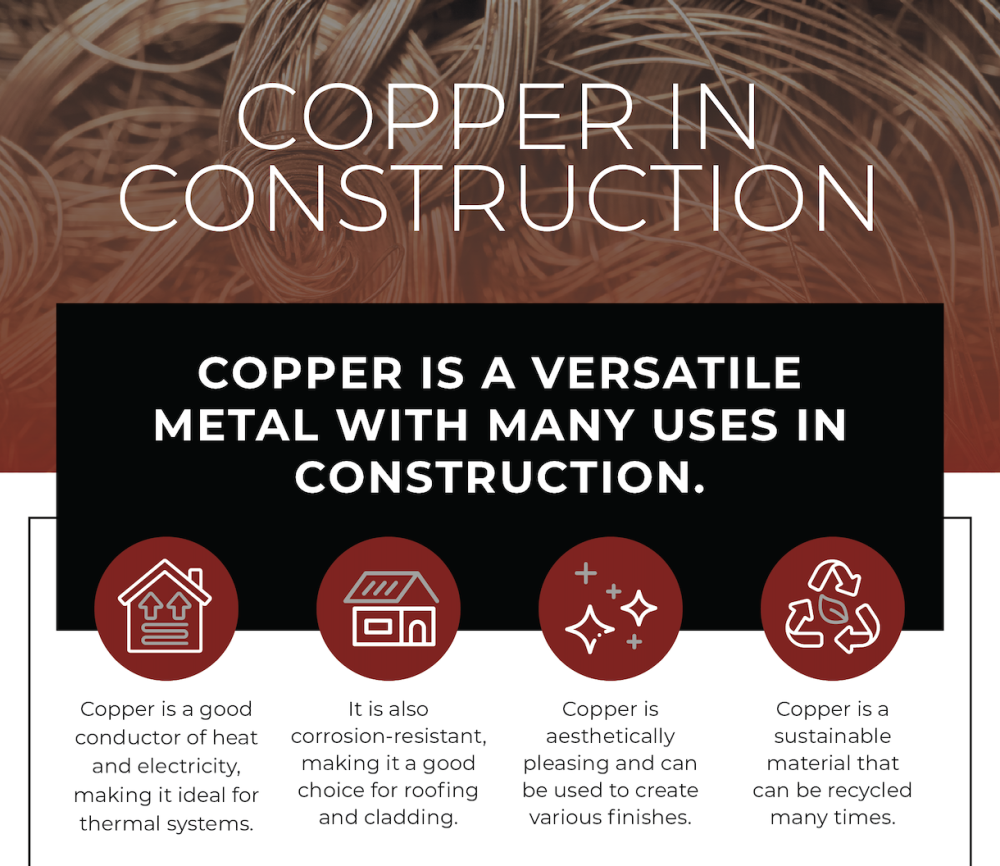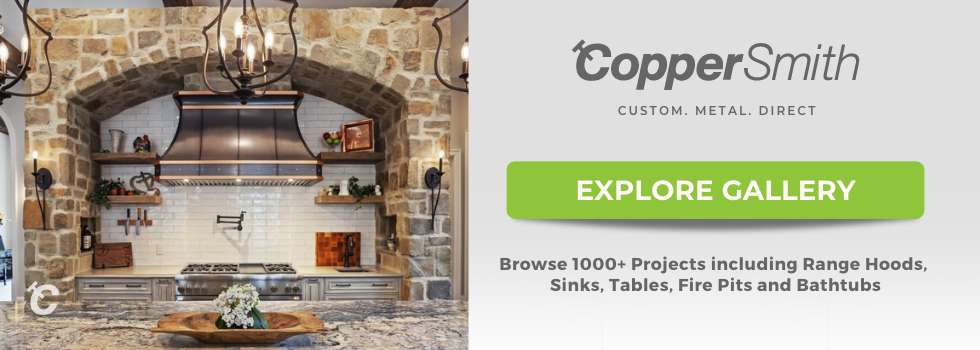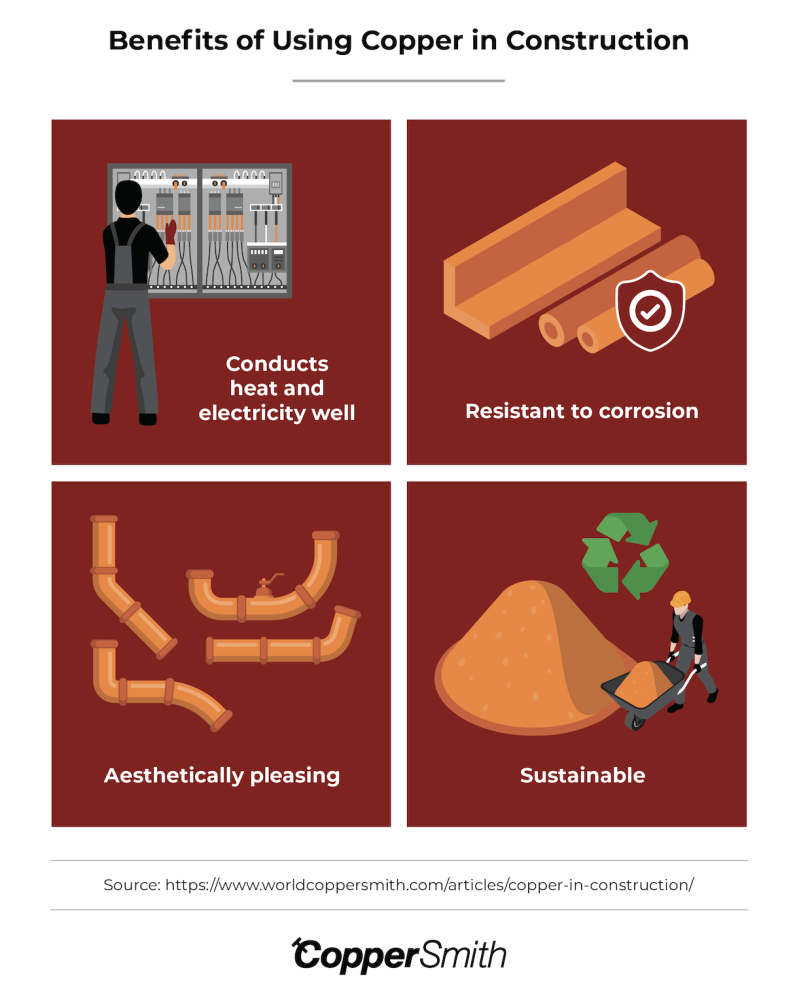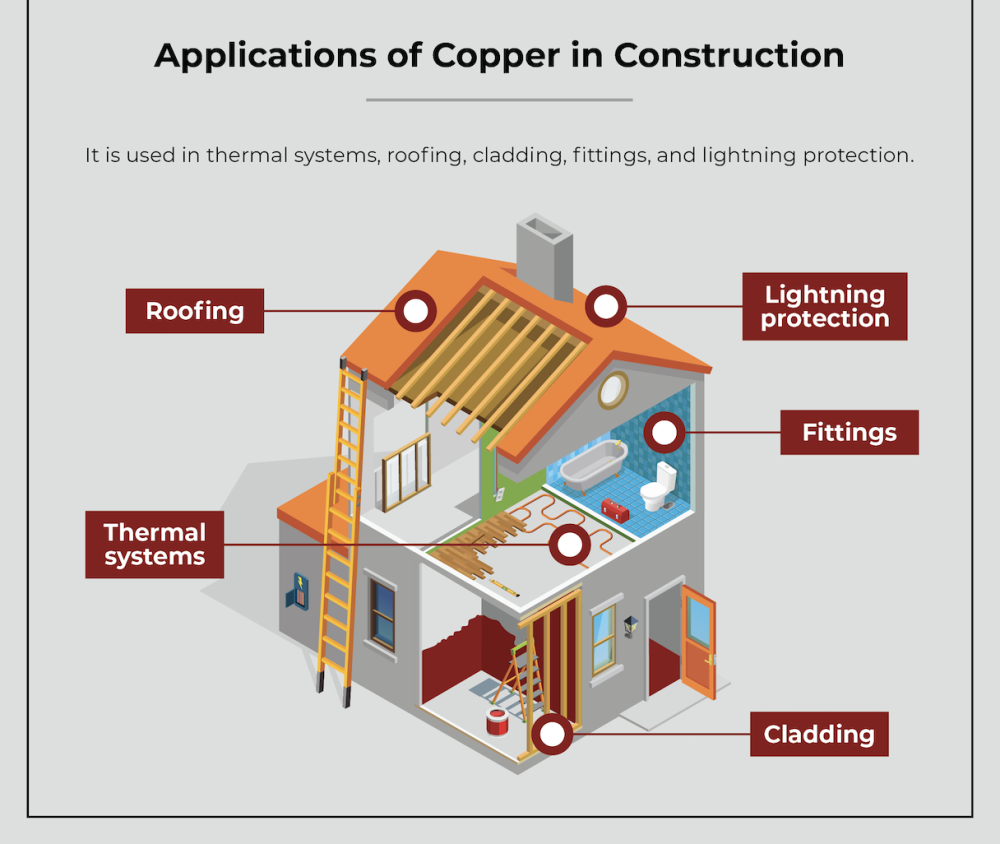
Copper has been used for thousands of years in countless applications. We see it in the wiring of our homes and in the jewelry we wear. Copper is undoubtedly something that has so much versatility and has been at the forefront of many innovations and developments for thousands of years.
Copper is not just amazing to look at, with its most famous trait being its display of an iridescent brown or a bright metallic color, and a green patina, but because of its distinctive features, it has long been coveted by designers or architects. But what role does copper have to play in the world of construction? Here, we're going to show you everything you need to know and how copper can benefit the construction world in a myriad of methods.

How Did Copper Become a Key Part of Construction?
Having been in use for over 10,000 years, with an estimated start time of between 9,000 BC and 3,500 BC, copper has been an amazing part of our lives for so long. Between 3,500 BC and 1,500 BC, bronze was the most prominent metal, but copper soon overtook it during the Middle Ages due to of a number of factors, including the invention of printing. Copper became the perfect choice for printing plates and as copper became more widely used, it was part and parcel of a number of construction projects, predominantly in public institutions.
For many years, copper was commonly found in churches, universities, and government buildings, with copper roofs being one of the most distinguishable features. Some of the most distinguished architects relied on copper, from Frank Lloyd Wright who requested copper materials in every building project to artistic architects such as Franco Gary, whose famous copper fish sculpture on the Villa Olimpica in Barcelona. Needless to say, copper has been considered a viable commodity.
Fast forward to today, and we can see architectural copper in a variety of settings, including roofing, cladding, spires, flashings, and so much more. It has also evolved beyond being a weatherproof material and has found its way into doors because of its proven antimicrobial properties. Copper has been incorporated into public facilities and home environments, where you will see solutions such as our copper range of bathtubs, sinks, and cooker hoods.
- To be placed before “To view our copper products, click here.”
Other Great Benefits of Copper

- Cost-effectiveness - Because copper is less expensive in certain building components, for example, on roofing, it becomes a very cost-effective material. When you compare copper roofing to slate or lead, it is considered to be a far more cost-effective building component in the long run. Copper's initial cost is higher than some metals because it doesn't need to be replaced during a building's life, and because of its salvage value and durability, the additional costs are minimal.
- A recyclable material - Because more people are looking for sustainable materials and trying to find resources that require less mining, copper is almost 100% recyclable and does not degrade after each recycling process in comparison to other non-metallic materials. This makes it premium-grade scrap material, with recycled copper forming approximately 75% or more of modern copper sheets and coils.
- Protects against lightning strikes - Copper alloys are some of the most common materials used when protecting residences from lightning. Copper can be used as part of an approach to protecting commercial or residential properties from lightning where a copper skin can be bonded to an earth termination facility, or if it is thick enough, can be an adequate solution to protecting properties from lightning.
- Its wide range of finishes - Because you can alter the color of copper to create a different look, for example, green or patina finishes, this makes for a wide range of styles that can be far more aesthetically pleasing.

Use Copper in Your Home Construction With CopperSmith
Copper is an invaluable material that, because of its durability, has found its way into so many different aspects of construction over thousands of years, but will also provide an amazing aesthetic quality to your home. Because copper is such a beautiful material, you can customize it to elevate your home's appearance, whether it is through our copper hoods, tables, sinks, bathtubs, fire pits, or planters.
If you want to find out how it would look in your home, we can provide support by giving you a 3-D rendering of your design. With plenty of options to choose from, you can get a CAD 3-D rendering and quote within 24 hours. Get in contact with us today or call 1-888-431-4677 to see how we can help you realize your perfect vision.
Copper In Construction: How Is It Used?

- Copper and heating and plumbing - Copper is widely used in thermal systems because of its ability to conduct heat. It’s also waterproof, making it useful for piping, sinks, bath tubs, showers, and fixtures that supply water to washing machines and even dryers. It’s flexibility enable it to be bent into shape without any comprising its strength, which gets those copper pipes to work around difficult corners without much problem. And another big plus: it’s anti-microbial. It’s resistance to bacteria, viruses and microbes is also key in its use in plumbing and the transportation of water.
- Copper and roofing - Copper resists corrosion, which makes it a good candidate for decorative gutters and roofing. Add to that, it just looks nice–no doubt nicer than vinyl or painted aluminum and steel.
- Copper and cladding - Copper is great for cladding because it can be bent into shape with relative ease while maintaining its strength and durability. Did we mention it’s waterproof and resists corrosion?
- Copper and fittings - Copper is found in all kinds of fixtures and fittings around the home, including hinges, door knobs, cabinet and drawer pulls, and faucets.
- Copper and electrical wiring - Copper takes first place of all metals in the conduction of electricity. You already probably know that electrical wire = copper. No need for much detail here.
To view our copper products, click here.

